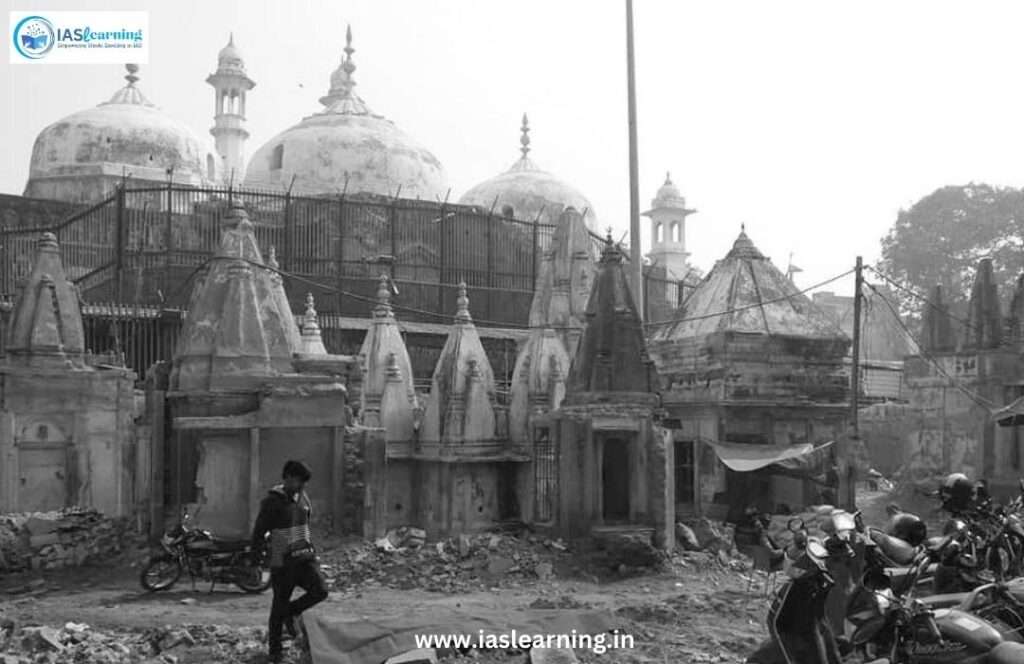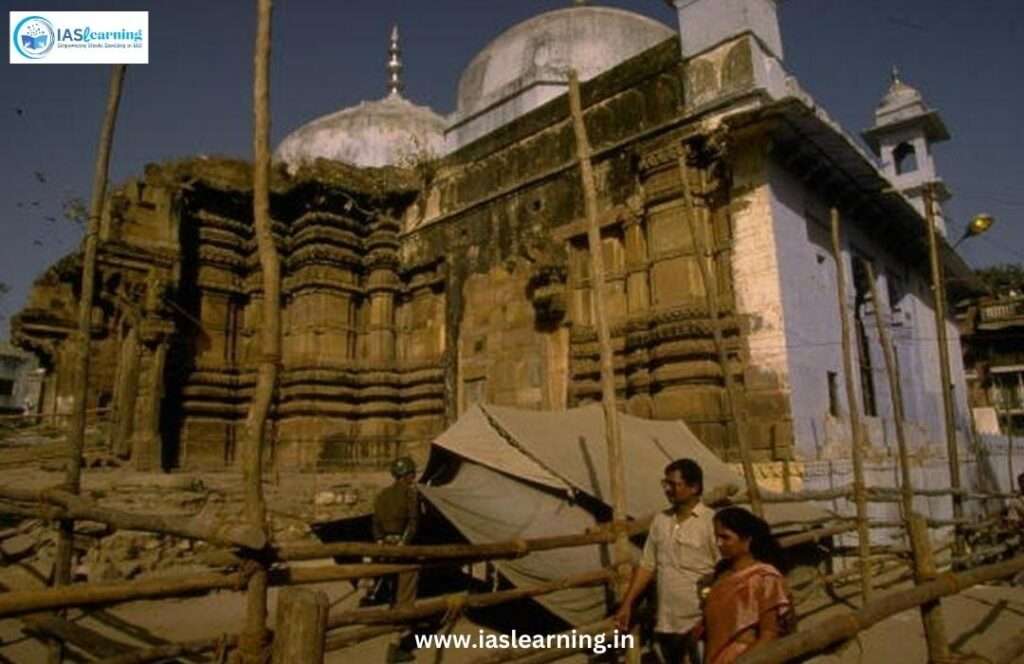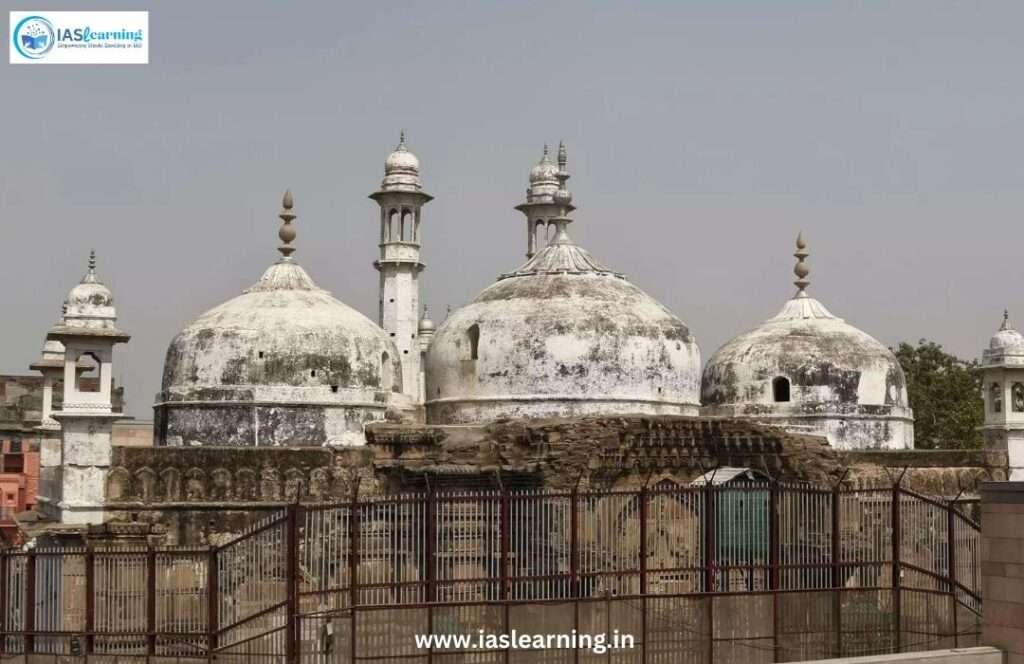The Historical Tapestry Unraveled
Gyanvapi Mosque Dispute: A Glimpse into the Past
The roots of the Gyanvapi Mosque Dispute can be traced back to the 17th century during the reign of Mughal Emperor Aurangzeb. It is said that the mosque was built after Aurangzeb ordered the destruction of the original Kashi Vishwanath Temple, one of the holiest sites in Hinduism. This act of religious conversion laid the foundation for the conflict that endures today.
Centuries of Contention
The dispute has endured for centuries, with both Hindus and Muslims claiming rights over the site. The mosque stands adjacent to the Kashi Vishwanath Temple, which has been a symbol of Hindu devotion for millennia. The contentious coexistence of these two religious structures has given rise to numerous legal battles and clashes.
On May 12, 2022, the Varanasi court, in a landmark judgment on the Gyanvapi mosque, refused to remove advocate commissioner Ajay Kumar Mishra, who was appointed for the survey of the mosque, and ordered a survey of the basement of the Gyanvapi mosque before May 17.

In the ancient city of Varanasi, along the serene banks of the Ganges River, lies a historic and religious site that has been at the center of a contentious and deeply emotional dispute – the Gyanvapi Mosque. This dispute, spanning centuries, has woven together threads of history, religion, and law into a complex tapestry that continues to unravel today. In this article, we will embark on a journey through time and delve into the multifaceted dimensions of the Gyanvapi Mosque Dispute.
The Religious Divide
Religion and Emotion
The Gyanvapi Mosque Dispute is not just a legal tussle; it is deeply rooted in religious sentiments. For Hindus, Kashi Vishwanath is considered the holiest of the holy, a place where Lord Shiva is believed to reside. The presence of a mosque adjacent to the temple is seen as an affront to their religious beliefs.
The Muslim Perspective
On the other side of the spectrum, Muslims view the mosque as a place of worship that has existed for centuries. They argue that it should be preserved as a testament to their history and faith.
Gyanvapi Mosque Dispute: Legal Battles and Their Outcomes
The Colonial Era
During the British colonial period, efforts were made to address the dispute through legal means. However, these attempts often led to more division than resolution.
Post-Independence India
After India gained independence in 1947, the Gyanvapi Mosque Dispute became a symbol of the challenges in harmonizing diverse religious beliefs within a secular state. Legal proceedings continue, with various court rulings and government interventions shaping the course of the dispute.
Current Status and Ongoing Debates

A Delicate Balance
Today, the Gyanvapi Mosque and Kashi Vishwanath Temple stand side by side, separated by a wall. The dispute remains unresolved, with both sides expressing deep-seated emotions and unwavering faith.
Calls for Resolution
There are voices from within India and abroad calling for an amicable solution to the Gyanvapi Mosque Dispute, one that respects the sentiments of both Hindus and Muslims while upholding the principles of justice and religious freedom.
Gyanvapi Mosque Dispute: Bridging the Chasm
The Gyanvapi Mosque Dispute is a testament to the complexities of harmonizing religious beliefs and historical legacies within the framework of modern law. It serves as a reminder of the challenges that emerge when history, religion, and legal principles intersect.
In conclusion, the Gyanvapi Mosque Dispute continues to be a historical controversy that demands careful consideration and compassion from all stakeholders. The resolution, whenever it may come, will undoubtedly shape the future of religious coexistence in India.
Issues
- The controversy erupted in 1991 when a group of local priests sought permission to worship in the Gyanvapi complex, claiming the mosque was built on a demolished portion of Kashi Vishwanath Temple.
- The matter was reignited after petitioners demanded an archaeological survey of the Gyanvapi complex but the Allahabad High Court stayed the archaeological study of the complex.
- A videography survey of the mosque was ordered on the plea of some women petitioners who seek to perform worship of idols that are said to be located on the walls of the mosque.
- The Muslim side alleged bias from the side of the court-appointed commissioner of the survey and called videography inside the mosque, a violation of the Places of Worship Act, 1991.
- The court has said that court commissioner, accused of biased conduct will not be changed and two more commissioners will join the archaeological survey of the Gyanvapi mosque.
- It has also ordered the continuation of the video survey of the Kashi Vishwanath temple-Gyanvapi mosque complex and has asked to submit the report.
Genesis of the Gyanvapi Mosque

- The Gyanvapi Mosque is believed to have been built in 1669 during the reign of Aurangzeb, who ordered the demolition of the existing Vishweshwar temple and its replacement by a mosque.
- This is also mentioned in the 1937 book History of Benares: From the Earliest Times Down to 1937 by AS Altekar.
- The name of the mosque is said to have derived from an adjoining well, the Gyanvapi, or Well of Knowledge.
- The plinth of the temple was left untouched, and served as the courtyard of the mosque.
- One of the walls of the temple became the qibla wall, the most ornate and important wall in a mosque that faces Mecca.
- Material from the destroyed temple was used to build the mosque.
- An old sculpture of the Nandi bull inside the compound of the present Kashi Vishwanath Temple faces the wall of the mosque instead of the sanctum sanctorum of the temple.
- It is believed that Nandi is in fact, facing the sanctum sanctorum of the original Vishweshwar temple.
Details of Kashi Vishwanath Temple
- Details about the Shiva temple is described in the Kashi Khanda of Skanda Purana.
- Kashi Vishwanath temple was constructed by the Hari Chandra in the 11th
- The present Kashi Vishwanath Temple was built in the 18th century by Rani Ahilyabai Holkar of Indore, immediately to the south of the mosque.
- The temple stands on the western bank of the holy river Ganga, and is one of the twelve Jyotirlingas, the holiest of Shivatemples.
- The main deity is known by the name Vishvanatha or Vishveshvara meaning Ruler of The Universe.
- The two domes of the temple were covered by the gold offered by the Punjab Kesari Maharaja Ranjeet Singh in 1839.
- Many Hindus have long believed that the original lingam of the erstwhile Vishweshwar temple was hidden by the priests inside the Gyanvapi well during Aurangzeb’s raid.

References
- https://indianexpress.com/article/explained/court-order-on-kashi-vishwanath-temple-gyanvapi-mosque-site-in-varanasi-history-and-context-7914495/
- https://www.timesnownews.com/mirror-now/in-focus/what-is-gyanvapi-mosque-controversy-and-verdict-explained-in-9-points-article-91514873
- https://www.varanasi.org.in/kashi-vishwanath-temple
Gyanvapi Mosque Dispute: FAQs
1. What is the significance of the Gyanvapi Mosque in Varanasi?
The Gyanvapi Mosque is significant due to its proximity to the Kashi Vishwanath Temple, one of the holiest sites in Hinduism. This close proximity has led to a centuries-old dispute.
2. Has there been any recent progress in resolving the dispute?
The dispute remains ongoing, with periodic legal proceedings and discussions. There have been calls for an amicable solution, but a final resolution has yet to be achieved.
3. How does the Indian government view the dispute?
The Indian government has taken steps to mediate and address the dispute, aiming to find a solution that respects the sentiments of all parties involved.
4. What is the historical significance of Kashi Vishwanath Temple?
The Kashi Vishwanath Temple is believed to be the dwelling place of Lord Shiva, making it one of the most sacred sites in Hinduism.
5. How does the dispute impact religious relations in India?
The dispute underscores the complexities of harmonizing diverse religious beliefs within a secular state, serving as a symbol of the challenges and opportunities for religious coexistence in India.
